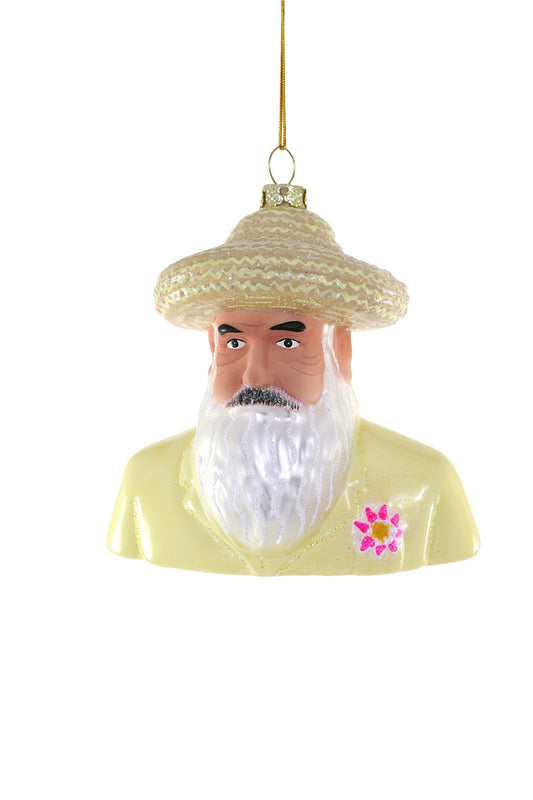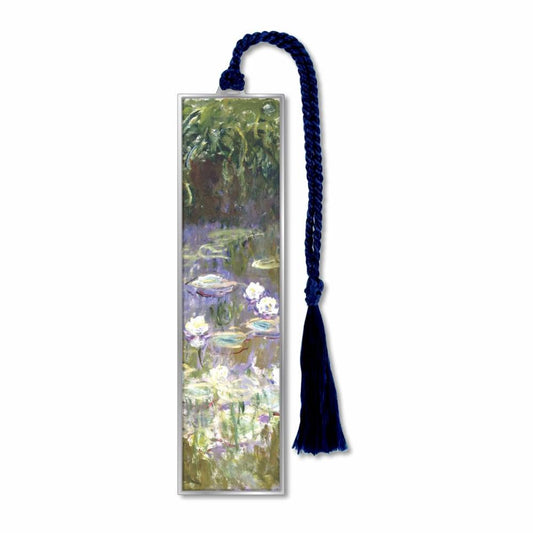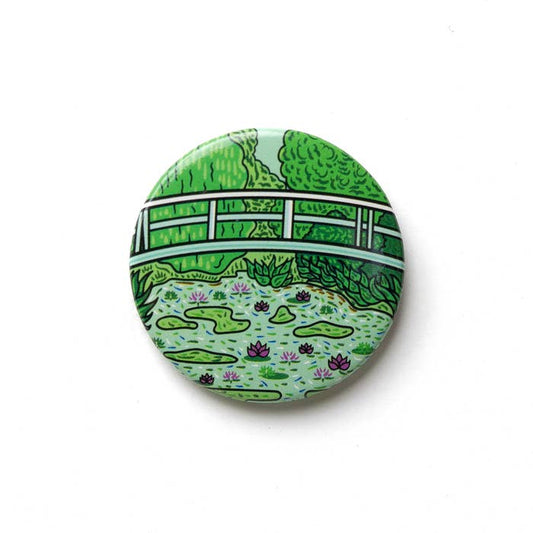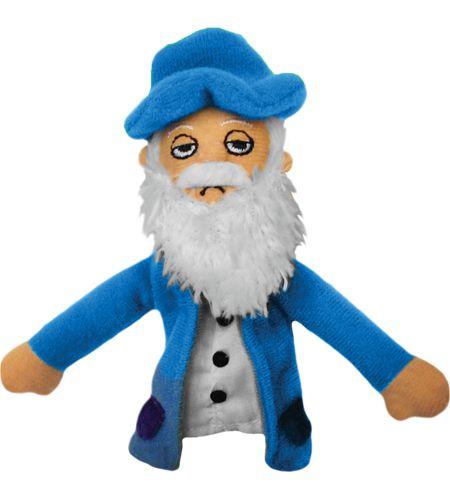Artist Series Quilling Card: "The Artist's Garden in Giverny" by Claude Monet
Artist Series Quilling Card: "The Artist's Garden in Giverny" by Claude Monet
Out of Stock
Couldn't load pickup availability
The Artist’s Garden at Giverny by Claude Monet is an oil on canvas painting created in 1900. Monet was known to be an avid gardener during his life and floral themes were common in his masterpieces. This work of art depicts the home in which he lived the longest at the end of his life where he tended to a magnificent garden in which he meticulously coordinated flower beds’ colors and time of blooming.
Quilling Cards' Artist Series artfully transforms paint strokes into paper strips using the ancient art of quilling. Each card takes several hours to make and reimagines a famous work of art into a magnificent greeting card that can either be sent and shared with loved ones or kept and framed as the work of art it is.
- Additional postage required when mailing
- Blank inside
- Color coordinated envelope included
- Suitable for framing
Product Details
Product Details
- Product type: Blank Note Card
- Shipping Dimensions: 5.5 × 7.0 × 0.125 inches (14.0 × 17.8 × 0.3 cm)
- Shipping Weight: 0.19 lb (3.0 oz; 85 g)
- SKU: SKU: SKU010008766
- UPC: 843425108865
- Part No.: AS0006
Share







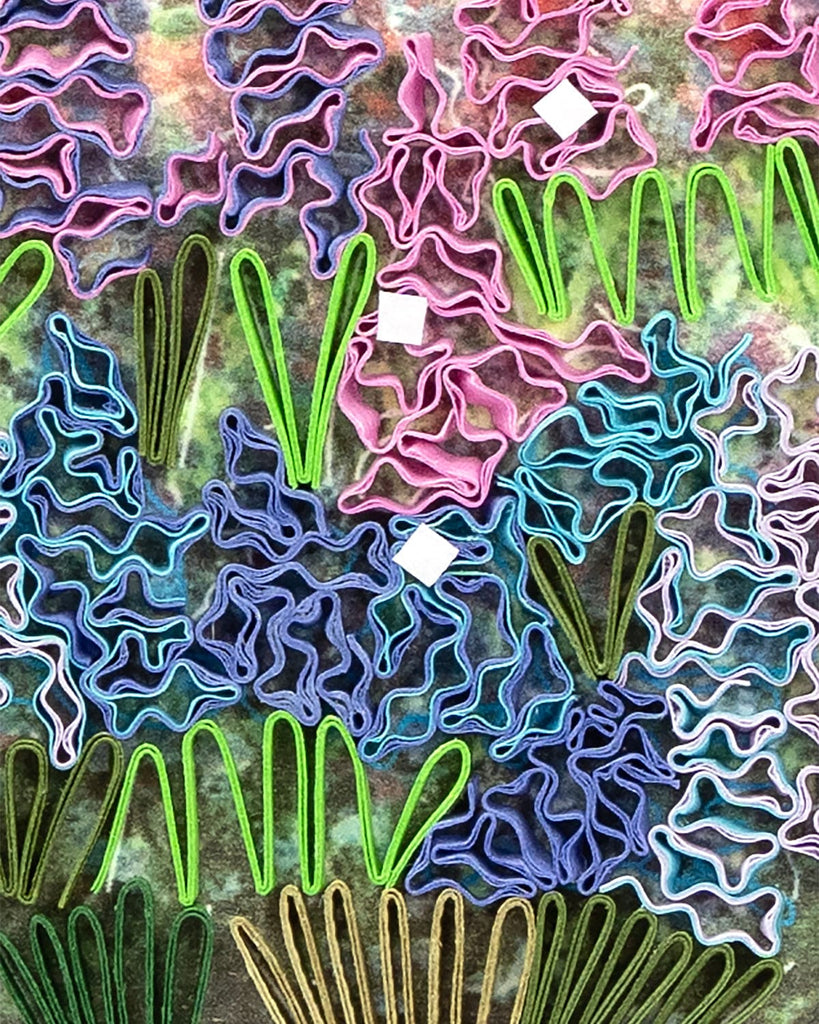
-
Quilled by Hand
Quilling, also known as paper filigree, is a paper art technique that involves shaping, rolling, and gluing strips of paper into decorative designs.
-
Social Enterprise
Social enterprises seek to maximize profits while maximizing benefits to society and the environment, and the profits are principally used to fund social programs.
-
Woman Owned Business
At least 51% of this business is owned and operated by women.
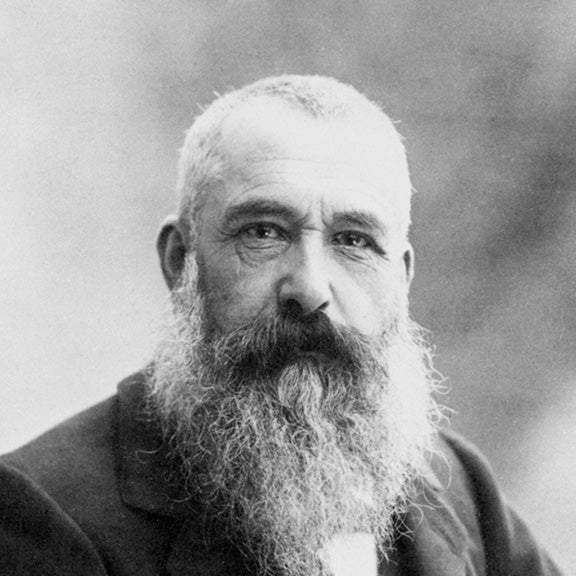
About the
Claude Monet
Claude Monet (1840 — 1926) was a French painter who was the initiator, leader, and unswerving advocate of the Impressionist style. In his mature works, Monet developed his method of producing repeated studies of the same motif in series, changing canvases with the light or as his interest shifted.
More Claude Monet
-
Blown Glass Ornament: Claude Monet
Regular price $18.95 USDRegular priceUnit price / per -
Lenticular Postcard: Monet (The Japanese Footbridge)
Regular price $3.25 USDRegular priceUnit price / per -
Monet Water Lilies Metal Bookmark
Regular price $18.50 USDRegular priceUnit price / per -
Sugar-Free Mints Tin: Woman with a Parasol
Regular price $4.95 USDRegular priceUnit price / per -
Art Button: Monet's "Japanese Bridge"
Regular price $2.00 USDRegular priceUnit price / per -
Claude Monet Magnetic Finger Puppet
Regular price $8.95 USDRegular priceUnit price / per -
Silver Muse Cuff: Claude Monet
Regular price $15.00 USDRegular priceUnit price / per -
Lenticular Postcard: Monet (Impression, Sunrise)
Regular price $3.25 USDRegular priceUnit price / per -
Lenticular Postcard: Monet (Camille Monet and a Child in the Artist’s Garden in Argenteuil)
Regular price $3.25 USDRegular priceUnit price / per -
Lenticular Postcard: Monet (Water Lilies)
Regular price $3.25 USDRegular priceUnit price / per

About the Vendor
Quilling Card
Quilling is the art of rolled, shaped, and glued paper that results in creating a unified, decorative design. The name quilling is thought to come from the origin of the art; birds’ feathers, or quills, were used to coil the strips of paper around.
Since 2015, Quilling Card has been certified with the Fair Trade Federation. The organization focuses on maintaining a code of values for just treatment of employees. With the rapid expansion of the business, Quilling Card employs over 500 quillers in two locations, providing a stable and safe work environment, with healthcare and food benefits for its employees.
-
Made by Hand
Hand crafted with love.
-
Minority Business Enterprise
Certified Minority Business Enterprise. At least 51% of the business is owned and operated by Black American, Hispanic, Native American, Asian Pacific, or Subcontinent Asian people.
-
Woman Owned Business
At least 51% of this business is owned and operated by women.
-
Museum Store Association Member
The Museum Store Association supports the cultural non-profit retail industry and the people who work in it.
-
Certified Fair Trade
Certified Fair Trade by Fair Trade International.
More from Quilling Card
-
Shadowbox Frame
Regular price $22.00 USDRegular priceUnit price / per -
Quilled Royal Guard Note Card CLEARANCE
Regular price $6.00 USDRegular priceUnit price / per$12.00 USDSale price $6.00 USDSale -
Quilled Royal Guard Teddy Bear Note Card CLEARANCE
Regular price $6.00 USDRegular priceUnit price / per$12.00 USDSale price $6.00 USDSale -
Quilled Double Decker Bus Note Card CLEARANCE
Regular price $6.00 USDRegular priceUnit price / per$12.00 USDSale price $6.00 USDSale -
Quilled Red Telephone Box Note Card CLEARANCE
Regular price $6.00 USDRegular priceUnit price / per$12.00 USDSale price $6.00 USDSale -
Quilled Big Ben Note Card CLEARANCE
Regular price $6.00 USDRegular priceUnit price / per$12.00 USDSale price $6.00 USDSale -
Frame for Artist's Series Quilling Cards (Rectangle, Gold)
Regular price $40.00 USDRegular priceUnit price / per -
Frame for Artist's Series Quilling Cards (Square, Black)
Regular price $40.00 USDRegular priceUnit price / per -
Artist Series Quilling Card: "Woman with a Parasol" by Claude Monet
Regular price $30.00 USDRegular priceUnit price / per -
Artist Series Quilling Card: "Composition" by Piet Mondrian
Regular price $30.00 USDRegular priceUnit price / per









